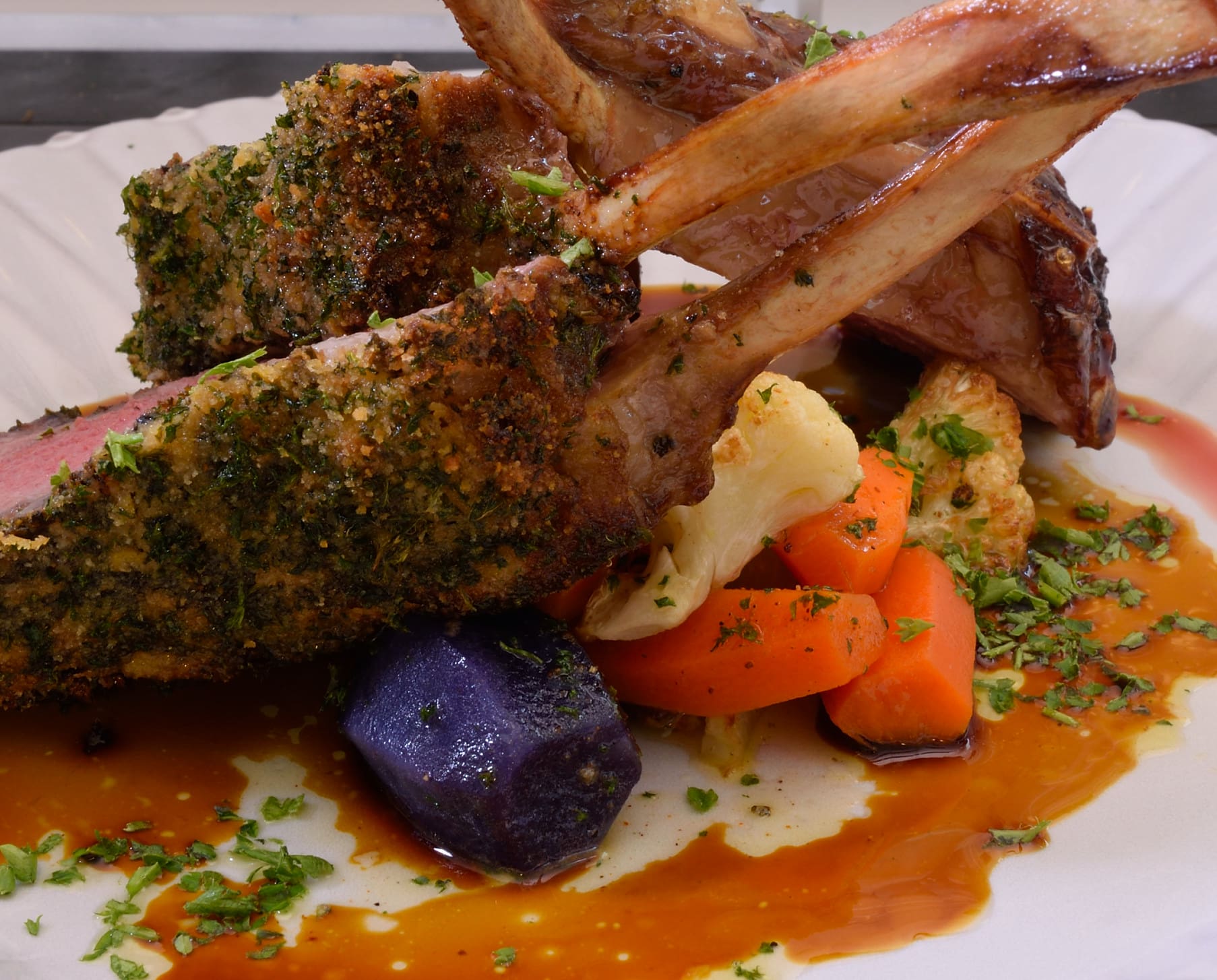Above: Lipavi C15 container, N15 polycarbonate racks. Lipavi C15L lid.
Note: For this demonstration, we are using the half rack on the left in the picture above–the one with the bones farthest apart.
How do you like your lamb?
People are usually a little less sure about how they want their lamb cooked–many are somewhat surprised even to be asked. Because of the pasteurization capabilities of sous vide, lamb can be safely served at almost any level of apparent doneness,
There is debate as to the exact definition of “rare,” “medium rare,” “au point,” etc. A little practice will help you learn just exactly what temperature achieves your preferred appearance of doneness.
Here are some basic temperature setting guidelines:
Rare: 129 F/54 C.
Medium rare: 135 F/57 C
Medium to Medium well: 140 F/60 C.
Well done: 150 F/74 C.
Serves 1-2
Level of difficulty: 2.0
Procedure:
Preheat the water in your sous vide bath to the temperature that most closely matches your preference. For the purpose of this demonstration, we used 129 F/54 C.
Processing the rack
After vacuum sealing the rack of lamb, process at the appropriate temperature for
4-9 hours, as per your scheduling convenience and regardless of the size. There is no “moment” before which the rack of lamb is not ready and after which it is overcooked. Even though the process of tenderization continues, the conversion of collagen to gelatin at sous vide temperatures is extremely slow–a difference of 2-3 hours is usually undetectable to the diner. As the temperature used increases, the tenderization process accelerates. Even so, a rack of lamb processed at 140 F/60 C for 8 hours will not be noticeably different than one that was processed for 4 hours.
While you are waiting for the lamb, prepare the other components as we described them or whatever you plan to serve as accompaniments. Once the rack has been removed from the sous vide bath, it will be ready for service within half an hour.
Preheat your oven to 400 F/204 C. Remove the rack from the bag and pat dry.

Sprinkle with the desired seasonings. Preheat the skillet to 350 F/176 C and add enough oil to coat the bottom.

Put the rack in the pan fat side down and fry until the desired color is achieved–usually between 30 seconds and 1 minute. Turn the lamb over and sear the other side for 10 seconds. Remove from the hot pan and set aside.

Use a pastry brush to paint the lamb with a light coating of mustard as shown. Combine the bread crumbs with the parsley.

Sprinkle with the crumbs.

Drizzle or spray with a few drops of oil or butter.

Stage the rack into the hot oven only long enough for the crust to set and brown–as little as five minutes. Remove the rack from the oven and set aside.

Arrange the other components of the presentation on the plate. In the picture: purple potatoes, roasted cauliflower, carrots.

Drizzle the demi-glace around the plate.

Use a sharp knife to cut between the bones and arrange the chops starting on the right and shingling towards the left.

This dish is timeless. We were serving it just like this as far back as the 70’s, and it was not new then. Some things just never get old.
Norm King



